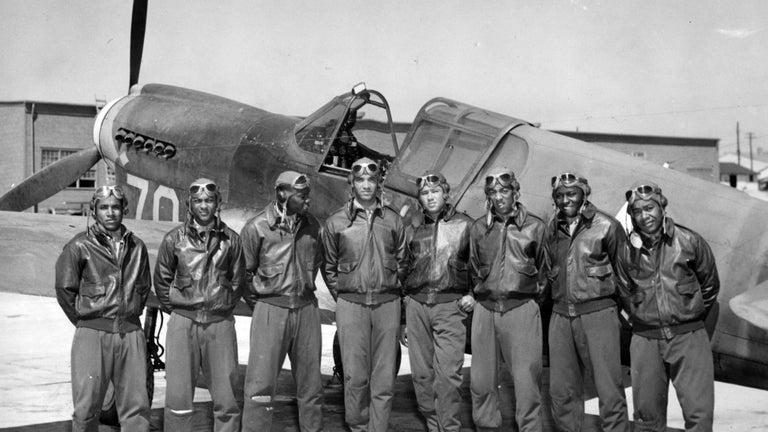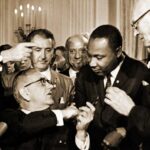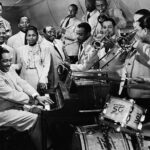The Tuskegee Airmen, an indomitable cadre of African American military pilots, navigated the turbulent skies of World War II and the equally challenging currents of racial segregation. Their story is one of courage, skill, and determination, breaking barriers both in the air and on the ground. This comprehensive exploration delves into every aspect of the Tuskegee Airmen’s journey, from their formation to their lasting legacy, answering the most commonly asked questions about these pioneering aviators.
What Were the Tuskegee Airmen?
The Tuskegee Airmen were the first African American military aviators in the United States Armed Forces. During World War II, they formed the 332nd Fighter Group and the 477th Bombardment Group of the United States Army Air Forces. Trained at Tuskegee Army Air Field in Alabama, they were collectively known as the “Red Tails” or “Red Tail Angels” because of the distinctive crimson paint applied to the tails of their aircraft.
Why Were the Tuskegee Airmen Formed?
The Tuskegee Airmen were formed in response to pressure from civil rights organizations and Black press, challenging the racial discrimination policies of the U.S. military. The formation of an all-Black flying unit was an experiment by the War Department to see if African Americans could serve effectively as military aviators. This experiment aimed to prove the capabilities of Black pilots and challenge the prevailing stereotypes of racial inferiority.
How Did the Tuskegee Airmen Train?
Training for the Tuskegee Airmen was conducted at the Tuskegee Army Air Field in Tuskegee, Alabama. The program was rigorous and designed to provide comprehensive flight training, from basic to advanced techniques. The curriculum covered physical fitness, military discipline, and extensive flight instruction, first in primary trainers, then in basic and advanced trainers, and finally in actual fighter aircraft. The instructors were a mix of White and African American personnel, with some of the latter being pioneers in their own right.
Where Did the Tuskegee Airmen Serve?
The Tuskegee Airmen served primarily in the European Theater of Operations during World War II. They were stationed at air bases in Italy and North Africa, conducting missions that included escorting bombers, reconnaissance, and ground attack. Their service covered various critical operations over Germany, Italy, and the Mediterranean region.
Who Were Key Figures Among the Tuskegee Airmen?
- Benjamin O. Davis Jr.: The first African American general in the United States Air Force and commander of the 332nd Fighter Group.
- Daniel “Chappie” James Jr.: A fighter pilot in the 332nd who would later become the first African American to achieve the rank of four-star general in the United States military.
- Charles Hall: The first Tuskegee Airman to shoot down an enemy aircraft.
- Lee Archer: Recognized as the “Ace” pilot of the Tuskegee Airmen for his multiple aerial victories.
The Legacy of the Tuskegee Airmen
The Tuskegee Airmen’s legacy is a testament to the skill, bravery, and determination in the face of adversity. They not only proved their detractors wrong by demonstrating exceptional abilities in combat but also played a significant role in the eventual integration of the U.S. Armed Forces. Their success laid the groundwork for the civil rights movements by showing that African Americans could perform as well as their White counterparts in sophisticated and demanding tasks.
Top 20 Questions About the Tuskegee Airmen
- When were the Tuskegee Airmen active?
- They were active during World War II, from 1941 to 1946.
- How many Tuskegee Airmen were there?
- Approximately 996 pilots were trained at Tuskegee from 1941 to 1946.
- Did the Tuskegee Airmen only consist of pilots?
- No, the term “Tuskegee Airmen” encompasses not only pilots but also navigators, bombardiers, mechanics, instructors, crew chiefs, nurses, cooks, and other support personnel.
- What aircraft did the Tuskegee Airmen fly?
- They primarily flew P-39, P-40, P-47, and P-51 fighter aircraft.
- How many combat missions did the Tuskegee Airmen fly?
- They flew more than 15,000 individual sorties in Europe and North Africa during World War II.
- Did the Tuskegee Airmen lose any bombers on their escort missions?
- Records indicate that the Tuskegee Airmen lost very few bombers to enemy fighters, showcasing their effectiveness in protecting the bombers they escorted.
- What awards and recognitions did the Tuskegee Airmen receive?
- They earned over 150 Distinguished Flying Crosses, Legions of Merit, and the Red Star of Yugoslavia, among other decorations.
- What challenges did the Tuskegee Airmen face?
- They faced significant racial discrimination both inside and outside the military, including segregation in training and service.
- How did the Tuskegee Airmen impact racial integration in the military?
- Their performance in World War II was a key factor in President Harry S. Truman’s decision to desegregate the U.S. Armed Forces in 1948.
- Are there any surviving Tuskegee Airmen?
- As of my last update in April 2023, there are a few surviving members, but their numbers are dwindling due to age.
The story of the Tuskegee Airmen is a powerful narrative of triumph over adversity, showcasing the heights of achievement that can be reached when opportunity is given and potential is realized. Their legacy continues to inspire future generations to strive for excellence and equality.





